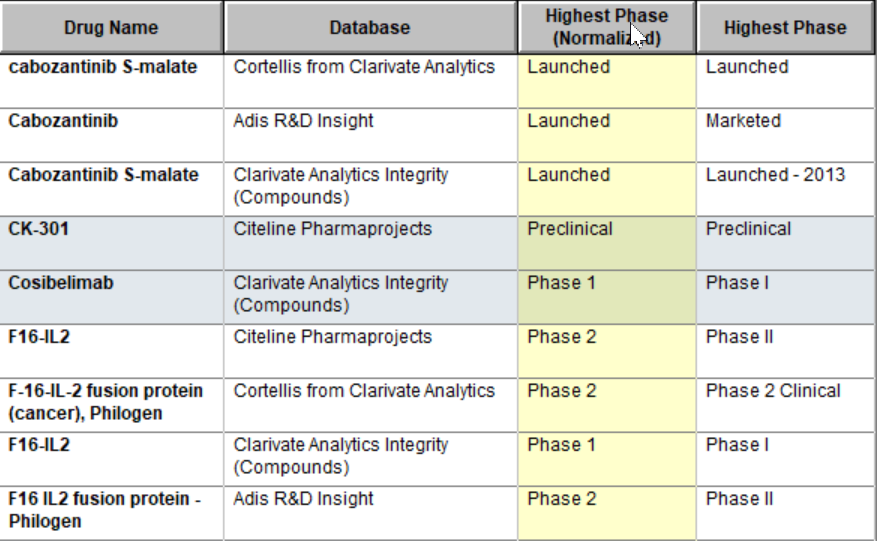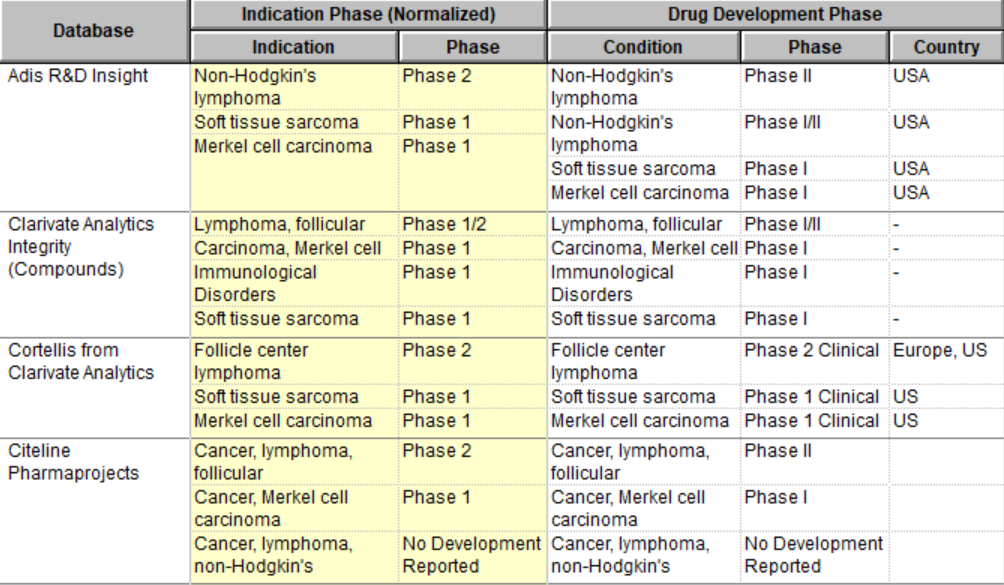Support: Tips for Using BizInt Smart Charts
Normalized Highest Phase
and Indication Phase columns
Version 5.2 of BizInt Smart Charts Drug Development Suite (Aug 2020) introduced two new columns for all drug pipeline databases:
- Highest Phase (Normalized)
- Indication Phase (Normalized)
These columns are available in pipeline charts created with Version 5.2 or later software.
The trial phase column in clinical trials charts is available in normalized form as of Version 5.8 (June 2024).
Highest Phase (Normalized) Column
The Highest Phase (Normalized) column converts the publisher phase to standard BizInt phase terminology (e.g. Phase 1, Phase 1/2, Launched) as shown in example below. This column is designed to assist users in analyzing phase differences across databases.

Indication Phase (Normalized) column
The Indication Phase (Normalized) column is a 2-column subtable showing the highest Phase in all countries for each Indication for all pipeline databases.
Phases are normalized to the standard BizInt phase terminology. Indications are not normalized (indication normalization is much more difficult, but can be done using VantagePoint - Smart Charts Edition.)
This column is designed to assist users in analyzing the phase by indication data across different databases.

Using Normalized Phase and Phase Indication columns
Use View | Columns to add the "Highest Phase (Normalized)" and "Indication Phase (Normalized)" columns to a single database or combined chart.
For combined (multi-database) charts, there is a new "Development Summary with Normalized Phase" template, which includes the two new columns. Use View | Apply Template to apply this template to combined reports.
BizInt Phase Terminology
These are the terms used for the standard BizInt phase terminology in the new Normalized columns. Terms that we haven't seen or don't expect remain in their original form (e.g. Phase 0).
| No Development Reported | Preregistration |
| Discovery | Registered |
| Preclinical | Launched |
| Phase 1 | Phase 4 |
| Phase 1/2 | Discontinued |
| Phase 2 | Suspended |
| Phase 2/3 | Withdrawn |
| Phase 3 |
Using the new columns in Reference Rows
Applying the "Summarize Unique Values" rule to the Highest Phase (Normalized) column in Reference Rows will help you identify where there is a difference in phases between databases, as shown below.
If all the records for a drug agree on phase, only a single value will appear; if different phases are shown for the drug, multiple values will appear. In this case, three records showed the drug in Phase 2, but one had it in Phase 1.




